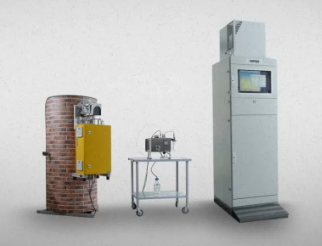Dioxins are some of the most toxic substances in the world, also in very low concentrations. They are formed in industrial combustion processes, notably during waste incineration. Emissions of dioxins from waste incinerators are therefore strictly controlled and monitored.

The generally low dioxin levels mean that real-time gas concentration monitoring is not possible. Instead, long-term samples are taken from the flue gas and accumulated in an absorbent inside a container which is sent to an external laboratory for analysis after the sampling period.
The sampling of the flue gas can be a challenge. It must be done under isokinetic conditions which require very good control and measurement of the sampling volume. At the same time, the often aggressive, dust-laden and wet flue gases must be managed. However, thanks to a robust design and proven technology from OPSIS’ other gas sampling products, the OPSIS DX100 dioxins sampler meets all these challenges.
The DX100 system complies with the requirements on long-term sampling under the European EN 1948 standard for determination of the mass concentration of PCDDs/PCDFs and dioxin-like PCBs.
As an option, the DX100 system can also be equipped with an isokinetic carbon dioxide (CO2) sampler. This is of particular interest for incineration facilities burning fuel of mixed origin, some biogenic and some fossil. By analysing the sample for the carbon-14 isotope, the share of biogenic CO2 can be determined. Fossil CO2 tax then only have to be paid for the CO2 actually originating from the fossil part of the fuel.
The savings compared to paying a high generic tax based on an assumed fossil share can provide a quick return on investment in the DX100 sampler equipped with the CO2 option.